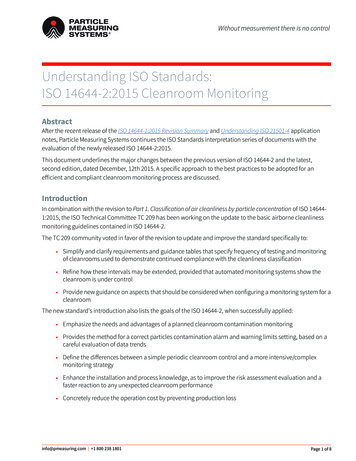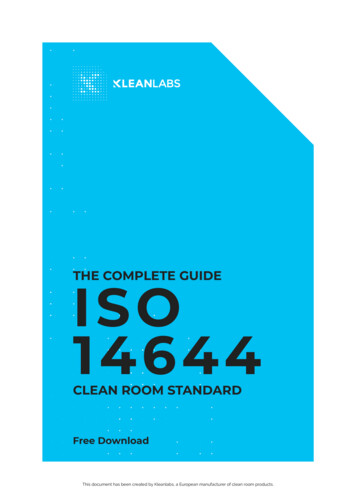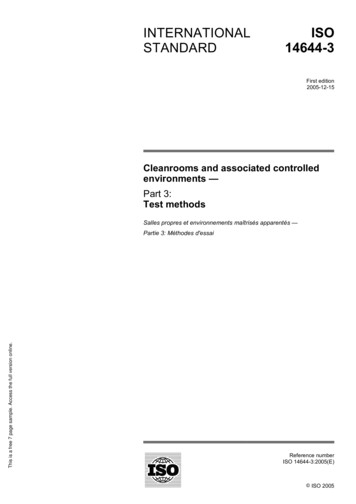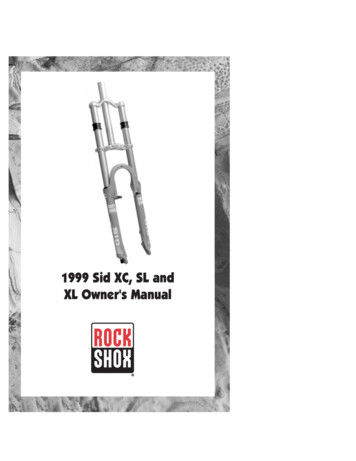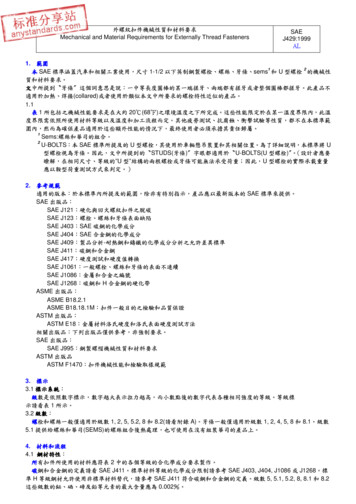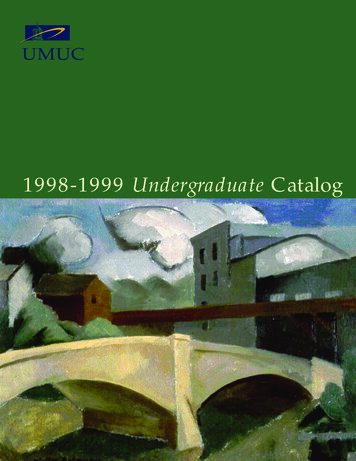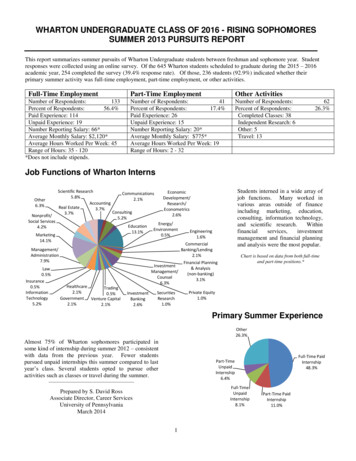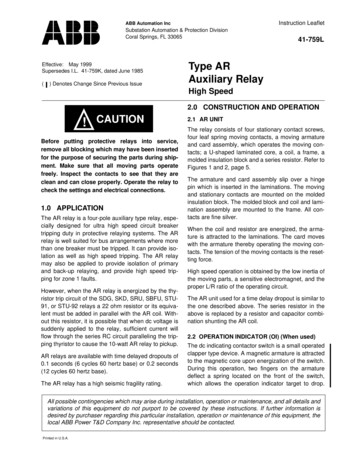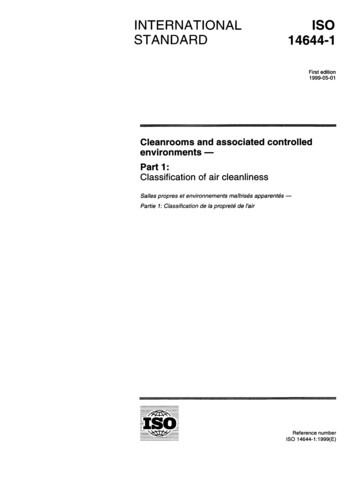
Transcription
ISO 2Definitions3Classification4Demonstration of complianceAnnex A (informative) Graphical illustration of the classes of Table 1Annex B (normative) Determination of particulatecleanliness classification using a discrete-particle-counting,light-scattering instrumentAnnex C (normative) Statistical treatment of particleconcentration dataAnnex D (informative) Worked examples of classification calculationsAnnex E (informative) Considerations for the counting and sizingof particles outside the size range applicable for classificationAnnex F (informative) Sequential sampling procedureBibliographyFigure A.1 — Graphical representation of ISO-classconcentration limits for selected ISO classesFigure F.1 — Boundaries for pass or fail by thesequential sampling procedureTable 1 — Selected airborne particulate cleanlinessclasses for cleanrooms and clean zonesTable C.1 — Student’s t distribution for the 95 %upper confidence limitTable F.1 — Upper and lower limits for time atwhich C observed counts should arrive11346791115172061831018 BSI 03-2001
EN ISO 14644-1:1999ForewordISO (the International Organization for Standardization) is a worldwidefederation of national standards bodies (ISO member bodies). The work ofpreparing International Standards is normally carried out through ISO technicalcommittees. Each member body interested in a subject for which a technicalcommittee has been established has the right to be represented on thatcommittee. International organizations, governmental and nongovernmental, inliaison with ISO, also take part in the work. ISO collaborates closely with theInternational Electrotechnical Commission (IEC) on all matters ofelectrotechnical standardization.Draft International Standards adopted by the technical committees arecirculated to the member bodies for voting. Publication as an InternationalStandard requires approval by at least 75 % of the member bodies casting a vote.International Standard ISO 14644-1 was prepared by Technical CommitteeISO/TC 209, Cleanrooms and associated controlled environments.ISO 14644 consists of the following parts, under the general title Cleanroomsand associated controlled environments.— Part 1: Classification of air cleanliness;— Part 2: Specifications for testing and monitoring to prove continuedcompliance with ISO 14644-1;— Part 3: Metrology and test methods;— Part 4: Design, construction and start-up;— Part 5: Operations;— Part 6: Terms and definitions;— Part 7: Enhanced clean devices.Users should note that the titles listed for parts 2 to 7 are working titles at thetime of the release of part 1. In the event that one or more of these parts aredeleted from the work programme, the remaining parts may be renumbered.Annex B and Annex C form an integral part of this part of ISO 14644. Annex A,Annex D, Annex E, and Annex F are for information only. BSI 03-2001
EN ISO 14644-1:1999IntroductionCleanrooms and associated controlled environments provide for the control ofairborne particulate contamination to levels appropriate for accomplishingcontamination-sensitive activities. Products and processes that benefit from thecontrol of airborne contamination include those in such industries as aerospace,microelectronics, pharmaceuticals, medical devices, food, and healthcare.This part of ISO 14644 assigns ISO classification levels to be used for thespecification of air cleanliness in cleanrooms and associated controlledenvironments. It also prescribes the standard method of testing as well as theprocedure for determining the concentration of airborne particles.For classification purposes, this part of ISO 14644 is limited to a designatedrange of considered particle sizes for determination of particle concentrationlimits. This part of ISO 14644 also provides standard protocols for thedetermination and designation of cleanliness levels that are based on airborneconcentrations of particles smaller or larger than the size range designated forclassification.This part of ISO 14644 is one of a series of standards concerned with cleanroomsand contamination control. Many factors besides airborne particulate cleanlinessmust be considered in the design, specification, operation, and control ofcleanrooms and other controlled environments. These are covered in some detailin other parts of the International Standards prepared by ISO/TC 209.In some circumstances, relevant regulatory agencies may impose supplementarypolicies or restrictions. In such situations, appropriate adaptations of thestandard testing procedures may be required. BSI 03-2001
EN ISO 14644-1:19991 ScopeThis part of ISO 14644 covers the classification of air cleanliness in cleanrooms and associated controlledenvironments exclusively in terms of concentration of airborne particles. Only particle populations havingcumulative distributions based on threshold (lower limit) sizes ranging from 0,1 "m to 5 "m are consideredfor classification purposes.This part of ISO 14644 does not provide for classification of particle populations that are outside of thespecified particle size range, 0,1 "m to 5 "m. Concentrations of ultrafine particles (particles smallerthan 0,1 "m) and macroparticles (particles larger than 5 "m) may be used to quantify these populations interms of U descriptors and M descriptors, respectively.This part of ISO 14644 cannot be used to characterize the physical, chemical, radiological, or viable natureof airborne particles.NOTE The actual distribution of particle concentrations within incremental size ranges normally is not predictable and typicallyis variable over time.2 DefinitionsFor the purposes of this part of ISO 14644, the following definitions apply.2.1 General2.1.1cleanroomroom in which the concentration of airborne particles is controlled, and which is constructed and used in amanner to minimize the introduction, generation, and retention of particles inside the room, and in whichother relevant parameters, e.g. temperature, humidity, and pressure, are controlled as necessary2.1.2clean zonededicated space in which the concentration of airborne particles is controlled, and which is constructed andused in a manner to minimize the introduction, generation, and retention of particles inside the zone, andin which other relevant parameters, e.g. temperature, humidity, and pressure, are controlled as necessaryNOTEThis zone may be open or enclosed and may or may not be located within a cleanroom.2.1.3installationcleanroom or one or more clean zones, together with all associated structures, air-treatment systems,services, and utilities2.1.4classificationlevel (or the process of specifying or determining the level) of airborne particulate cleanliness applicable toa cleanroom or clean zone, expressed in terms of an ISO Class N, which represents maximum allowableconcentrations (in particles per cubic metre of air) for considered sizes of particlesNOTE 1The concentrations are determined by using equation (1) in 3.2.NOTE 2 Classification in accordance with this International Standard is limited to the range extending from ISO Class 1 throughISO Class 9.NOTE 3 The considered particle sizes (lower threshold values) applicable for classification in accordance with this InternationalStandard are limited to the range from 0,1 "m through 5 "m. Air cleanliness may be described and specified (but not classified) interms of U descriptors or M descriptors (see 2.3.1 or 2.3.2) for considered threshold particle sizes that are outside of the range coveredby classification.NOTE 4 Intermediate ISO classification numbers may be specified, with 0,1 the smallest permitted increment; i.e., the range ofintermediate ISO classes extends from ISO Class 1,1 through ISO Class 8,9.NOTE 5Classification may be specified or accomplished in any of three occupancy states (see 2.4).2.2 Airborne particles2.2.1particlesolid or liquid object which, for purposes of classification of air cleanliness, falls within a cumulativedistribution that is based upon a threshold (lower limit) size in the range from 0,1 "m to 5 "m BSI 03-20011
EN ISO 14644-1:19992.2.2particle sizediameter of a sphere that produces a response, by a given particle-sizing instrument, that is equivalent tothe response produced by the particle being measuredNOTEFor discrete-particle-counting, light-scattering instruments, the equivalent optical diameter is used.2.2.3particle concentrationnumber of individual particles per unit volume of air2.2.4particle size distributioncumulative distribution of particle concentration as a function of particle size2.2.5ultrafine particleparticle with an equivalent diameter less than 0,1 "m2.2.6macroparticleparticle with an equivalent diameter greater than 5 "m2.2.7fibreparticle having an aspect (length-to-width) ratio of 10 or more2.3 Descriptors2.3.1U descriptormeasured or specified concentration, of particles per cubic metre of air, including the ultrafine particlesNOTE The U descriptor may be regarded as an upper limit for the averages at sampling locations (or as an upper confidence limit,depending upon the number of sampling locations used to characterize the cleanroom or clean zone). U descriptors cannot be used todefine airborne particulate cleanliness classes, but they may be quoted independently or in conjunction with airborne particulatecleanliness classes.2.3.2M descriptormeasured or specified concentration of macroparticles per cubic metre of air, expressed in terms of theequivalent diameter that is characteristic of the measurement method usedNOTE The M descriptor may be regarded as an upper limit for the averages at sampling locations (or as an upper confidence limit,depending upon the number of sampling locations used to characterize the cleanroom or clean zone). M descriptors cannot be used todefine airborne particulate cleanliness classes, but they may be quoted independently or in conjunction with airborne particulatecleanliness classes.2.4 Occupancy states2.4.1as-builtcondition where the installation is complete with all services connected and functioning but with noproduction equipment, materials, or personnel present2.4.2at-restcondition where the installation is complete with equipment installed and operating in a manner agreedupon by the customer and supplier, but with no personnel present2.4.3operationalcondition where the installation is functioning in the specified manner, with the specified number ofpersonnel present and working in the manner agreed upon2 BSI 03-2001
EN ISO 14644-1:19992.5 Roles2.5.1customerorganization, or the agent thereof, responsible for specifying the requirements of a cleanroom or clean zone2.5.2supplierorganization engaged to satisfy the specified requirements of a cleanroom or clean zone3 Classification3.1 Occupancy state(s)The particulate cleanliness of air in a cleanroom or clean zone shall be defined in one or more of threeoccupancy states, viz. “as-built”, “at-rest”, or “operational” (see 2.4).NOTE It should be recognized that the “as-built” state is applicable to newly completed or newly modified cleanrooms or clean zones.Once testing in the “as-built” state is completed, further testing for compliance will be performed in the “at-rest” or the “operational”state, or both.3.2 Classification numberAirborne particulate cleanliness shall be designated by a classification number, N. The maximumpermitted concentration of particles, Cn, for each considered particle size, D, is determined from theequation:(1)whereCn is the maximum permitted concentration (in particles per cubic metre of air) of airborne particlesthat are equal to or larger than the considered particle size. Cn is rounded to the nearest wholenumber, using no more than three significant figures.N is the ISO classification number, which shall not exceed a value of 9. Intermediate ISOclassification numbers may be specified, with 0,1 the smallest permitted increment of N.D is the considered particle size, in micrometres.0,1 is a constant, with a dimension of micrometres.Table 1 presents selected airborne particulate cleanliness classes and the corresponding particleconcentrations for particles equal to and larger than the considered sizes shown. Figure A.1(see Annex A) provides a representation of the selected classes in graphical form. In case of dispute, theconcentration Cn as derived from equation (1) shall serve as the standard value. BSI 03-20013
EN ISO 14644-1:1999Table 1 — Selected airborne particulate cleanliness classes for cleanrooms and clean zonesISO classificationnumber (N)Maximum concentration limits (particles/m3 of air) for particles equal to and larger than theconsidered sizes shown below [concentration limits are calculated in accordance withequation (1) in 3.2]0,1 "mISO Class 1ISO Class 2ISO Class 3ISO Class 4ISO Class 5ISO Class 6ISO Class 7ISO Class 8ISO Class 9101001 00010 000100 0001 000 0000,2 "m2242372 37023 700237 0000,3 "m101021 02010 200102 0000,5 "m4353523 52035 200352 0003 520 00035 200 0001 "m8838328 32083 200832 0008 320 0005 "m292932 93029 300293 000NOTE Uncertainties related to the measurement process require that concentration data with no more than three significantfigures be used in determining the classification level3.3 DesignationThe designation of airborne particulate cleanliness for cleanrooms and clean zones shall include:a) the classification number, expressed as “ISO Class N”;b) the occupancy state to which the classification applies;c) the considered particle size(s), and the related concentration(s), as determined by the classificationequation (1) where each considered threshold particle size is in the range from 0,1 "m through 5 "m.Example designation:ISO Class 4; operational state; considered sizes:0,2 "m (2 370 particles/m3), 1 "m (83 particles/m3)The considered particle size(s) for which the concentration(s) will be measured shall be agreed upon by thecustomer and the supplier.If measurements are to be made at more than one co
This part of ISO 14644 cannot be used to characterize the physical, chemical, radiological, or viable nature of airborne particles. NOTE The actual distribution of particle concentrations within incremental size ranges normally is not predictable and typically is variable over time. 2 Definitions For the purposes of this part of ISO 14644, the following definitions apply. 2.1 General 2.1.1 .File Size: 354KBPage Count: 24
